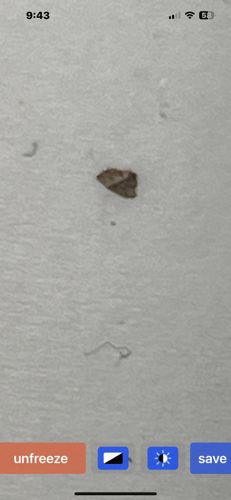Case-bearing Clothes Moth
Scientific Name: Tinea pellionella
Order & Family: Lepidoptera, Tineidae
Size: Larvae can reach up to 10-15 mm. Adult moths have a wingspan of 10-14 mm.

Natural Habitat
Indoors, particularly in dark, undisturbed areas where natural fibers are stored or present, such as closets, attics, storage chests, and under furniture.
Diet & Feeding
Larvae feed on natural fibers, including wool, fur, feathers, hair, felt, and other animal products. They are known pests of clothing, carpets, upholstered furniture, and stored textiles.
Behavior Patterns
Case-bearing clothes moth larvae construct and live within a silken case, which they carry with them as they feed and grow. The case is camouflaged with fibers from their food source. Adults are not strong fliers and are often seen resting on surfaces or scurrying. They are most active in dim light or darkness. They undergo complete metamorphosis.
Risks & Benefits
Risks: Significant pests of stored natural fiber items, causing damage to clothing, carpets, and other textiles. They do not bite or transmit diseases. Benefits: As decomposers of natural fibers, they play a minor role in breaking down organic matter in natural environments, but primarily known as pests in human dwellings.
Identified on: 9/2/2025